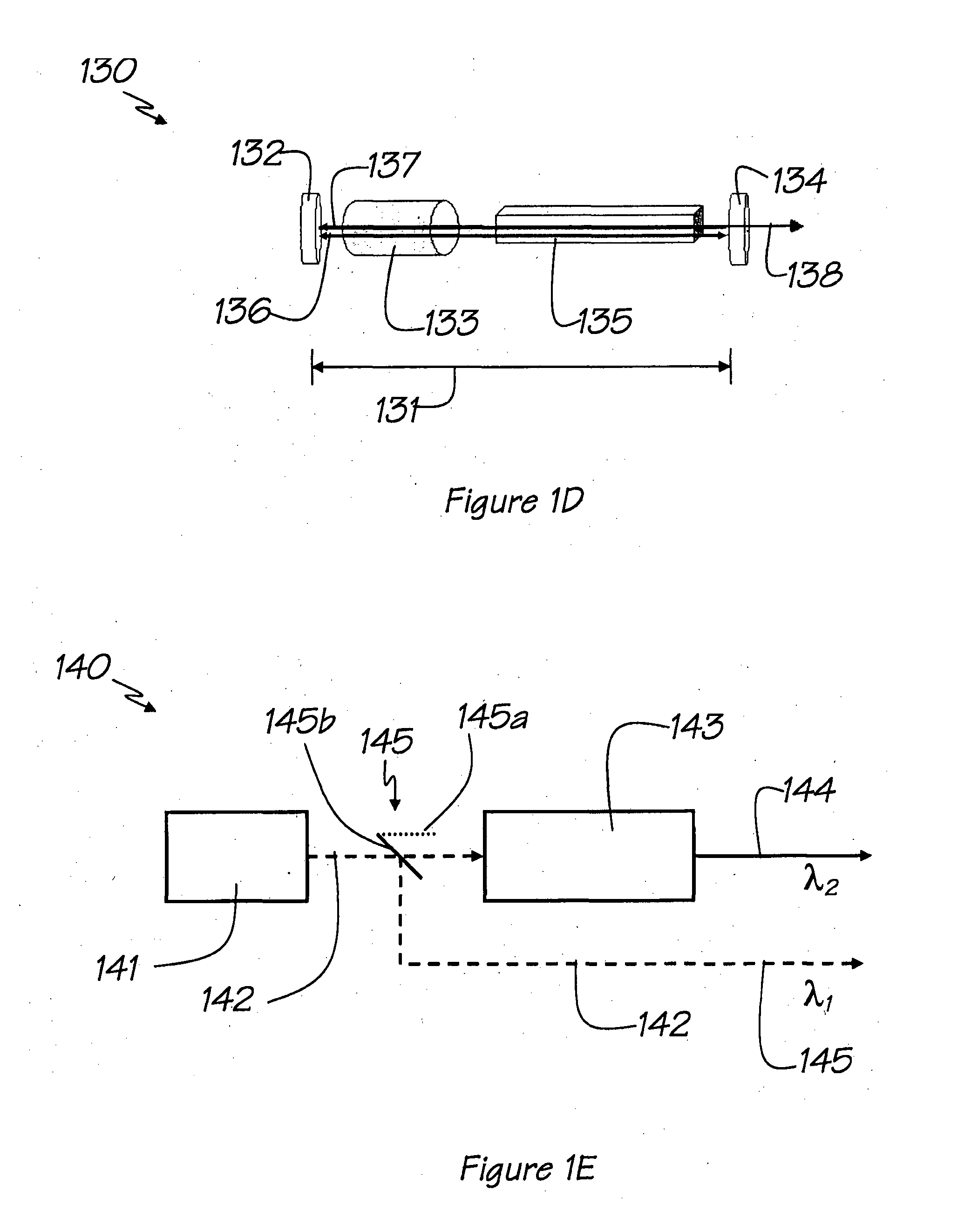Mid to far infrared diamond raman laser systems and methods
a laser system and diamond technology, applied in the field of laser systems, can solve the problems of low spatial precision with which the laser beam power is deposited into the tissue, the inability to carry out neurosurgical procedures like brain tumour excising with current laser technology, and the range of indications and efficacy, so as to minimise multiphonon interactions, increase raman gain, and minimise absorption loss
- Summary
- Abstract
- Description
- Claims
- Application Information
AI Technical Summary
Benefits of technology
Problems solved by technology
Method used
Image
Examples
Embodiment Construction
[0073]Disclosed herein are Raman laser systems for generation of output radiation in the mid- to far-infrared spectral region of the spectrum (greater than about 5.5 μm), extending to the terahertz region (greater than 100 μm). In particular, the laser systems disclosed comprises a solid state diamond Raman material for Raman shifting a first wavelength by stimulated Raman scattering in the Raman material to generate the mid- to far-infrared output radiation from the laser system. Both external Raman laser systems and internal Raman laser systems are envisaged for generation of the output radiation. The diamond Raman material may be single crystal diamond, or polycrystalline diamond. Alternatively, the diamond Raman material may comprise more than one single crystal, which may be bonded to each other by an adhesive-free process such as diffusion bonding. The Raman Material may be low birefringence diamond. The diamond Raman material may have low nitrogen impurity content, for exampl...
PUM
 Login to View More
Login to View More Abstract
Description
Claims
Application Information
 Login to View More
Login to View More - R&D
- Intellectual Property
- Life Sciences
- Materials
- Tech Scout
- Unparalleled Data Quality
- Higher Quality Content
- 60% Fewer Hallucinations
Browse by: Latest US Patents, China's latest patents, Technical Efficacy Thesaurus, Application Domain, Technology Topic, Popular Technical Reports.
© 2025 PatSnap. All rights reserved.Legal|Privacy policy|Modern Slavery Act Transparency Statement|Sitemap|About US| Contact US: help@patsnap.com



